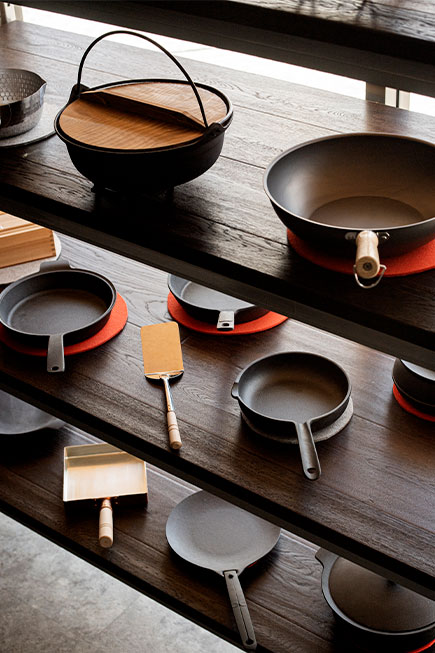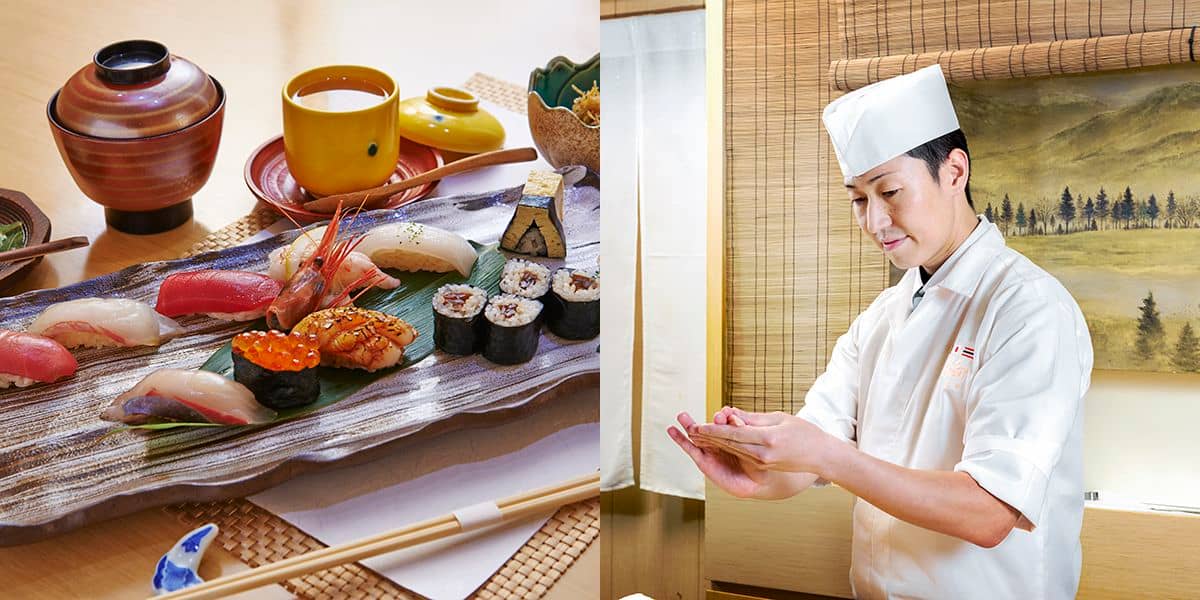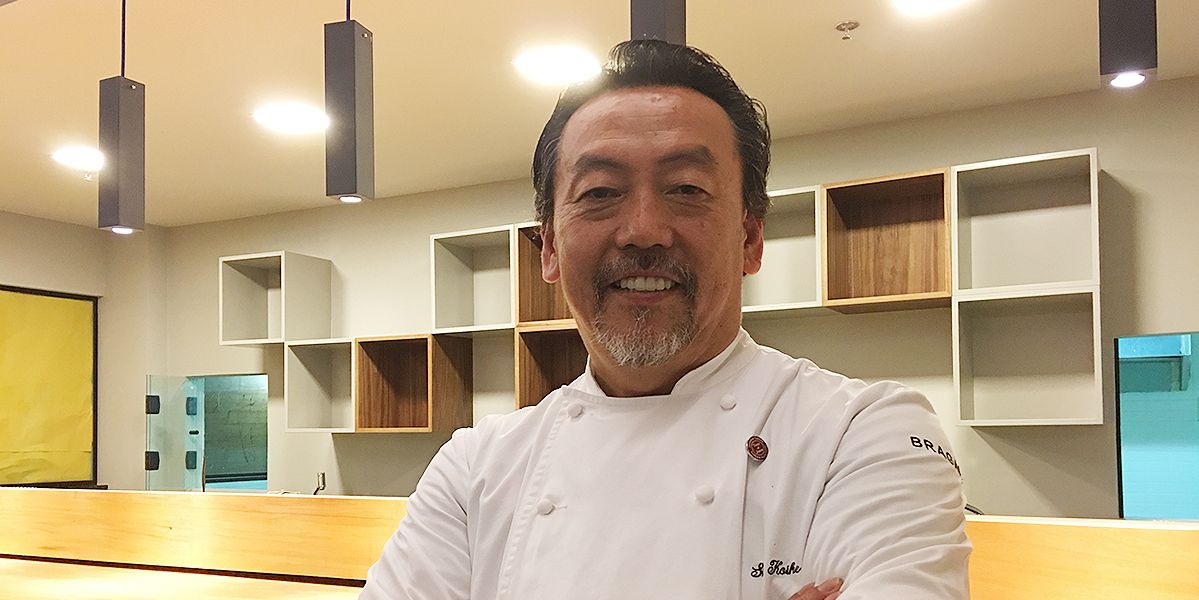
Japan at the table ‘down-under’
When former chef Leigh Hudson first visited Japan with his wife Stephanie in 2006 it was to accompany her on a nostalgic trip to the country in which she’d lived and worked for over three years before they met; while a wonderful holiday and incredible food was inevitable, they could not have envisaged how enormously the journey would impact their future.
Instantly falling for the country, well before it became fashionable with Australian travellers, the innately inquisitive soul piloted an itinerary which dug deep into the culture, cuisine and artful craftmanship of the tools of culinary trade.
As fate would have it, Gifu prefecture, one of his wife’s former home-bases was renowned for hand-crafted blades, a drawcard for any passionate chef, but it was in Sakai city, south of Osaka, a destination revered for traditional single-bevel knives, where Leigh first bore witness to their expert forging. Leigh discovered a covetable selection of Japanese knives, each built for a specific purpose; from intricate garnishing work to filleting fish of various sizes, deboning eels, hand-slicing noodles, and preparing vegetables of far-ranging textures. Every blade had a specially crafted angle and were thinner, lighter, sharper and more flexible than their European counterparts which were popular around the globe at the time. He learnt that Japanese knives performed the cleanest cut - effecting mouthfeel, taste and even nutritional value.
Leigh returned to Australia with a collection of superbly hand-made knives for personal use and, during a dinner party show-and-tell, an entrepreneurial friend suggested opening an online Japanese knife store - despite e-commerce being a relatively foreign concept at the time.
In 2007 the couple launched their Chef’s Armoury online store as well as a small physical shop at the back of a café they were operating. A year later they closed the café, making room for their expanding new business. Their first Sydney store was the third Japanese knife shop to open outside Japan, following closely on the heels of New York and London.
‘It was a risk’ Leigh reflects. ‘Everyone from my accountant to our family said, “you’re crazy doing it because you'll never make enough money out of this”. Now we have three stores and two websites.’
However, it wasn’t always easy to sell such specialist blades to an Australian audience - it took 6 years of educating chefs and cooks on the benefits of Japanese knives before things took off. Separate to the chefs and restaurateurs they’d developed relationships with, a community which now tallies in the thousands, the business also needed to broaden the story for the public. Via cooking classes and workshops Chef’s Armoury slowly started introducing home cooks to the essential components of Japanese cuisine, including a wide variety of Japanese ingredients and implements which were impossible to source elsewhere in Australia at the time, and their mailing list surged.
‘Even from the beginning we included Japanese food. At that time, I felt like you couldn’t sell Japanese knives as an alone by saying “Hey, here's some knives - start cooking.” The idea was to have something soft with it, something that would more easily lead to a conversation - and that was Japanese food.’
Chef’s Armoury originally stocked many more ingredients than they have currently available , having refocussed and edited their lines over time. ‘We originally had everything from flour to make mochi, micro-shrimp, loads of dried seaweed and even chocolates, but we realized that wasn't really our thing. We had to concentrate on the story we were creating with the business - and the next thing to come on board was cookware’. Oigen cast iron cooking vessels, designed to last a lifetime and including items like the donabe, commonly referred to as a nabe pot, teppanyaki pans, trivets and takoyaki grill pans, were set firmly in their sights. ‘We approached them, with help of JETRO(Japan External Trade Organization) ’s help, and ended up being their first direct overseas customer, collaborating closely around importation logistics. Our BBQ’s and Konro (hibachi /charcoal grills) followed shortly after that.”

A selection of exceptional, handsome and long-lasting Oigen cast iron ware.
Passionate and hands-on, significant research is conducted before each buying trip where the couple travels far and wide to source items that will complement the store’s existing inventory; only products aligning with the quality and integrity of their core wares are chosen.
Before the pandemic, Leigh and Stephanie were travelling to Japan three to four times a year. ‘We were probably one of the first lot of foreigners to arrive back in the country when Japan reopened. Now we’re there at least twice a year visiting regular suppliers who are continually developing new products. A couple of companies tend to want our opinion on which direction to go – which is great’.
While close attention is paid to any gaps in the needs of the Chef’s Armoury customer base, which evolves year after year, the couple sometimes simply stumble across items they’d love to have in their own home and then buy in bulk - knowing that it’s easier to sell something they’re personally enamoured with. ‘If you looked around my kitchen you’d think it was a Chef’s Armoury store!’ laughs Leigh. ‘I figure if I really want something, other chefs and home cooks will want them too, the konro and binchotan (charcoal) are good examples.’
Also proving the success of this rule of thumb is a particular spatula. ‘It’s ugly as hell, but it's the best spatula I've used in my life. I finally found one which worked seamlessly and being made of steel, it didn’t melt on cast iron etc…. we’ve sold heaps.’
Bearing in mind the narrative strategy of Chef’s Armoury, when they buy in any item, it’s observed closely from all angles.
‘I like to say we aren’t selling “stuff” but experiences.’ says Leigh. ‘I'll look at something like the konro for instance and think ‘what am I going to make on it?’. The answer is yakitori. So, the next question is ‘what am I going to skewer the yakitori with?’. Now we’re selling skewers. What else are we missing? Oh, little dishes for tare (sauce), something to serve on, the perfect charcoal (binchotan)... and we’ll require a fire starter – so we’ll order them in.’

Shoyu, Hon-mirin and other artisanal ingredients
Chef’s Armoury sells a selection of ingredients from larger importers of Japanese foodstuffs, but they also source a handful of key products, such as their mirin and soy, directly from the makers. ‘Obviously you need both items when cooking Japanese food generally - but to make a good tare for glazing yakitori you need a great mirin and great soy. That's why we import one of the best mirin I’ve found in Japan – it’s been produced in Gifu prefecture since the Edo period and aged three years. It’s more expensive than commercial brands but you use less of it. We also sell a 10-year-old version for drinking.’
The shoyu (Soy sauce) is from a boutique brewery run by a husband-and-wife team. Leigh had heard great things about this small-batch soy but knew they’d never sold outside Japan before. Understanding the importance of introductions in Japanese culture, he hadn’t overtly pushed to meet them and fortuitously, they were connected by one of his Nihonshu (sake) suppliers, whilst visiting the town they share.
Sake is another important chapter in the Chef’s Armoury story; a superb range is stocked by sibling business Sake Shop . While many of their regulars are Japanese, they’ve recently seen a sharp increase in customers who’ve ‘just got back from Japan’ looking for well-crafted Sake as a way of extending their holiday.

A small selection of Chef’s Armoury’s impressive regional Nihonshu line-up
Leigh’s comprehensive understanding of the pillars of Japanese cuisine is evident and has earned him enormous trust with clients. Whether it’s knives, an ugly spatula, or key foodstuffs like dashi, miso, rice or nori, Chef’s Armoury is the go-to for many Australians who cook Japanese cuisine regularly - and if you’re thinking that demographic is predominantly from the restaurant scene, think again. Leigh reports ‘A lot of our online sales are to people living in areas where you cannot source good ingredients easily - if we stop doing food, regional Australia has stopped cooking Japanese food’.
Of course, it’s relationships developed in Japan which help guarantee this Australian business delivers the goods. One of the many reasons Leigh loves travelling through and working with Japan is that ‘everything is so ordered and on time’ which might be one of the reasons his suppliers, most of whom are now friends, joke that ‘if you unzip Leigh you’ll find a little Japanese man inside’. Perhaps the ultimate compliment for the guy with the ultimate condiments (..and knives and sake….).






